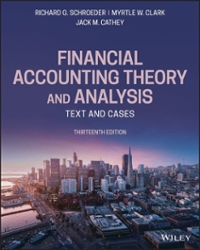Question
1. DLF Ltd. needs to procure SOBHA Ltd. furthermore, has offered a trade proportion of 1:2 (0.5 offers for each one portion of T Ltd.).
1. DLF Ltd. needs to procure SOBHA Ltd. furthermore, has offered a trade proportion of 1:2 (0.5 offers for each one portion of T Ltd.). Following data is given:
DLF Ltd. T. Ltd.
Benefit after tax '18,00,000 '3,60,000
Value shares extraordinary (Nos.) 6,00,000 1,80,000
EPS '3 '2
PE Ratio 10 times 7 times
Market cost per share '30 '14
Required:
(i) The number of value offers to be given by DLF Ltd. for procurement of SOBHA Ltd.
(ii) What is the EPS of DLF Ltd. after the procurement?
(iii) Determine the same income per portion of SOBHA Ltd.
(iv) What is the normal market cost per portion of DLF Ltd. after the procurement, accepting its PE numerous remaining parts unaltered?
(v) Determine the market worth of the combined firm.
2. Plant overhead can be charged on the premise of___________-.
A. material expense.
B. work cost.
C. prime expense.
D. direct costs
3. Office and managerial costs can be charged on the premise of__________.
A. material expense.
B. work cost.
C. prime expense.
D. production line cost.
4. Selling and conveyance costs can be charged on the premise of______________.
A. material expense.
B. work cost.
C. prime expense.
D. plant cost.
5. The proportions which reflect administrative proficiency in dealing with the resources is.
A. turnover proportions
B. productivity proportions.
C. transient dissolvability proportion.
D. long haul dissolvability proportion.
6. The proportions which uncover the end-product of the administrative approaches and execution is_____.
A. turnover proportions.
B. benefit proportions.
C. momentary dissolvability proportion.
D. long haul dissolvability proportion.
7. Profit from speculation is a_________.
A. turnover proportions.
B. momentary dissolvability proportion.
C. productivity proportions.
D. long haul dissolvability proportion.
8. Net benefit proportion is a ___________.
A. turnover proportion.
B. long haul dissolvability proportion.
C. momentary dissolvability proportion
D. productivity proportion.
9. Stock turnover proportion is a___________.
A. turnover proportion.
B. productivity proportion.
C. transient dissolvability proportion.
D. long haul dissolvability proportion.
10. Current proportion is a_____________
A. transient dissolvability proportion.
B. long haul dissolvability proportion.
C. benefit proportion.
D. turnover proportion.
Step by Step Solution
There are 3 Steps involved in it
Step: 1

Get Instant Access to Expert-Tailored Solutions
See step-by-step solutions with expert insights and AI powered tools for academic success
Step: 2

Step: 3

Ace Your Homework with AI
Get the answers you need in no time with our AI-driven, step-by-step assistance
Get Started


